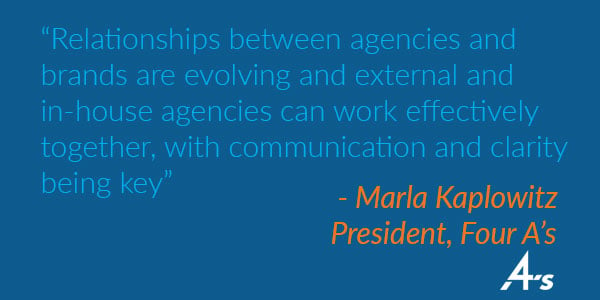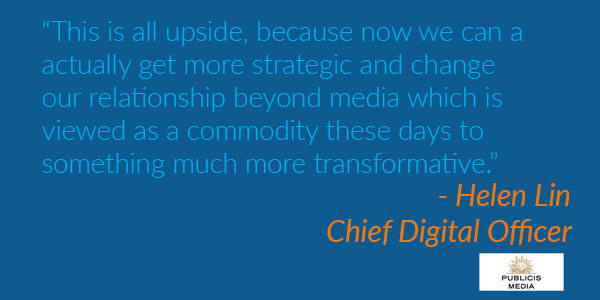A lot of excitement surrounded ANA’s inaugural In-House Agency Conference— so much so that the event sold out three months before the first speaker took the stage. I was excited to attend because Upwave works closely with both brands and their agencies to provide campaign measurement and optimization, and I had a lot of questions around in-housing; specifically, how widespread it was and how far along in the process brands were.
The conference content and the conversations I had brought the excitement around in-housing down to earth. Yes, brands of all sizes are exploring or developing an in-house agency team, but external agencies aren’t going away anytime soon. Their role and responsibilities are shifting, but agencies are no less important in the age of in-housing than when Mad Men ruled New York. To stay relevant—and employed—agencies need to focus on being strategic leaders and masters of measurement.
Why are brands in-housing?
Advertisers woke up to a world where consumers now have perfect media experiences. Not only is media everywhere, but we’ve also reached the epicenter for targeting the right person at the right time. So, for advertising to be noticed it needs to stand out, it needs to be interesting, it needs to be relevant, and it (still) needs to be on brand.
As a result, brands are taking ownership of their message, their data, and their dollars. It’s gluttonous to have a Valentine’s Day video produced by three different agencies all telling a similar story. On top of that, the multi-layer process for approving agency creative slows down execution and washes out the message. Brands know that the best way to create engaging stories that further their brand is to take them in-house.
So where does this leave external agencies?
Agencies have as much time to adapt to the changes of in-housing as brands do. And the agencies that will be most successful in the in-house agency world are the ones that fully participate in the process. Brands that are in-housing are relying on their agencies more and, as a byproduct, relationships are getting stronger and spreading to teams previously isolated from the external agency, like Customer Experience.
Agencies are riding shotgun and guiding brands down the messy road of in-housing, but as the tired analogy implies, it’s a journey. Brands aren’t taking everything in-house all at once. Universally, they’re starting with creative. Bringing creative in-house is fraught with hazards, like competing with agencies for talent and building the infrastructure to support a team. It is only once the creative team is stable that brands look to bring in the next layer; generally, operations, like contracts and partner relationships. These two areas cover the first few years of a brand’s in-housing journey, so on top of providing strategic leadership and being an integral part of the transition, agencies still have a lot of work to do.
Either last on any in-housing plan or suspiciously never mentioned is measurement. When results were shared at ANA’s In-House Agency conference touting revolutionary cross-channel campaigns, the pride of the in-house agency, they were measured in retweets, mentions, and eyeballs. Even the most robust and sophisticated in-house agencies aren’t handling measurement. There’s an agency of record responsible for collecting the business metrics and analyzing the results.
To stay a valued partner to an in-house or in-housing brand, agencies need to focus on two areas: strategic leadership and measurement. In the near term, agencies have to come to the table when their client starts the process of in-housing. Support them, and position yourself as a strategic partner for their in-house agencies. I don’t see a world where in-house agencies and external agencies don’t work together, even if an in-house agency is fully self-sufficient from a production and measurement standpoint. They’ll never have their finger on the industry pulse in the same way a traditional agency does.
Despite a focus on data like never before, changes haven’t materialized in the in-house agency. The best thing an agency can do to position themselves as a partner to their client is to be a steward of their data. Brands want to own their first-party data, even if they aren’t owning all the execution or channels for improving that dataset. And leadership within the brand is turning up the pressure to understand how individual campaigns and marketing overall are driving towards KPIs. It’s the best environment for measurement-minded external agencies to shine.
Brands aren’t yet ready to take measurement in-house, but they want more ownership and they want more visibility. Allow measurement partners to work equally with the brand client. Agencies can use the focus on measurement and data to set themselves apart. Vet your measurement partners according to how they’ll help improve your client’s first-party data set. Ensure the measurement you’re doing ties back to the true objective, rather than cutting corners with proxy metrics. Upwave is already seeing this shift ripple through our agency partners. And agencies are becoming more involved in the measurement process, getting a deeper understanding of methodology and their measurement partners’ approach to analysis. And rather than just passing on results, they’re showing a renewed dedication to providing findings that tell a story of their client’s campaign.
As we look towards robust and sophisticated in-house agencies, we also see smarter and more strategic external agencies working side by side. Agencies won’t have an army of executors; they’ll be seasoned leaders, knowledgeable about the latest trends, and fully aware of measurement, shifts in media consumption, and how to drive results throughout the marketing funnel.
Questions or comments? Feel free to reach out to Kate Blumberg here.




